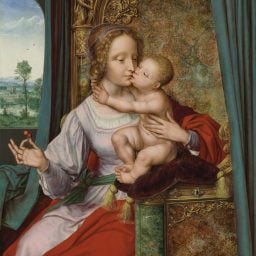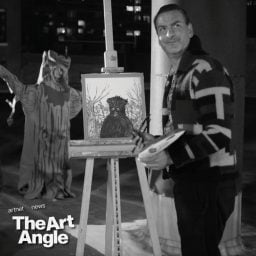If you search through the art history archives for hidden gags, visual puns, and absurd characters, it will become clear—no one does it like the Dutch. In fact, 25 joke books were written in the Netherlands during the 17th century alone, and a 1677 etiquette book called Hoofsche Welleventheid emphasized humor as a key way to gain respect from your peers. It should come as no surprise then that the “Golden Age” of Dutch art is full of bawdy comedy.
The development of a growing middle class with disposable income to spend on artworks also led to a shift in artistic subject matter. Biblical scenes, which had been at the peak of popularity, began to be overtaken by domestic interiors, still-lifes, and crowd scenes. And as today’s internet memes have proven, there’s nothing more popular than a funny picture, so comical scenes were also in great demand. Here are five Dutch artworks with hidden jokes bound to bring a smile to your face.
Jan Steen, Woman at her Toilet (1663)
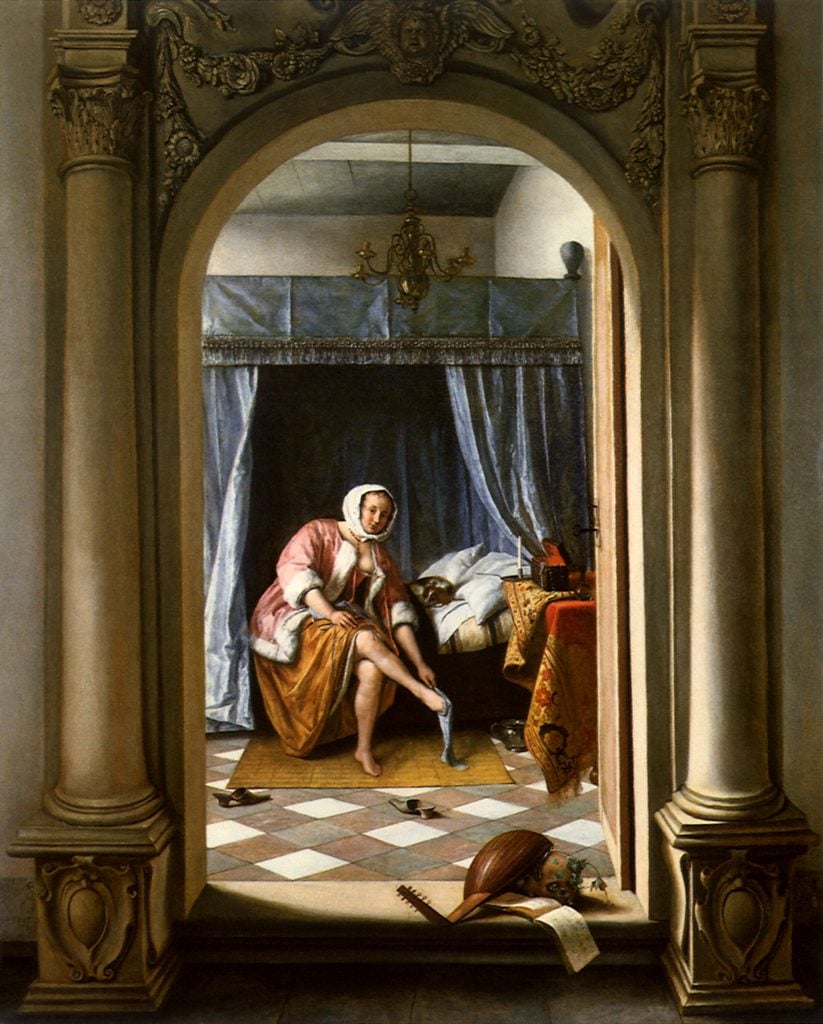
Jan Steen, Woman at her Toilet (1663). Photo: Picturenow/Universal Images Group via Getty Images.
Talk about “toilet humor.” Jan Steen’s Woman at her Toilet, now part of the U.K. Royal Collection, is a classic example of hidden wordplay. In the painting, we watch as the lady puts on her stocking (“kous”) by her nearby chamberpot (“piespot”). Combining the two words reveals that she is a prostitute (“pieskous”). Steen has also added a punny signature, signing his surname—the Dutch word for stone—onto the left stone column.
Johannes Vermeer, The Music Lesson (1662)
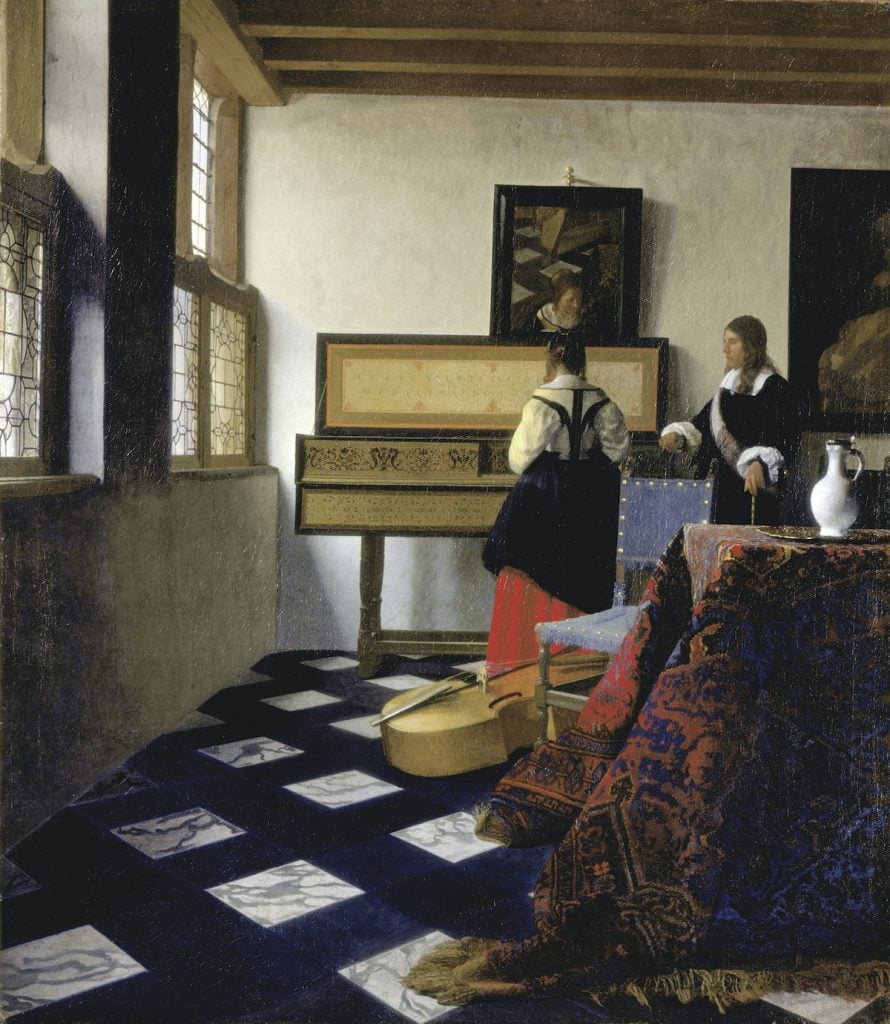
Johannes Vermeer, The Music Lesson (1662). Photo: Fine Art Images/Heritage Images / Getty Images.
This scene, also known as Woman Seated at a Virginal or A Lady at the Virginals with a Gentleman (and also in the Royal Collection), appears innocent, with two young lovers exchanging coy glances through a mirror above the piano. However, with the large cello laying on its back in the center of the floor, Vermeer has snuck in a hefty phallic symbol that is impossible to unsee once you’ve clocked it.
Willem Claesz, Still Life with Wan Li Plate (1649)
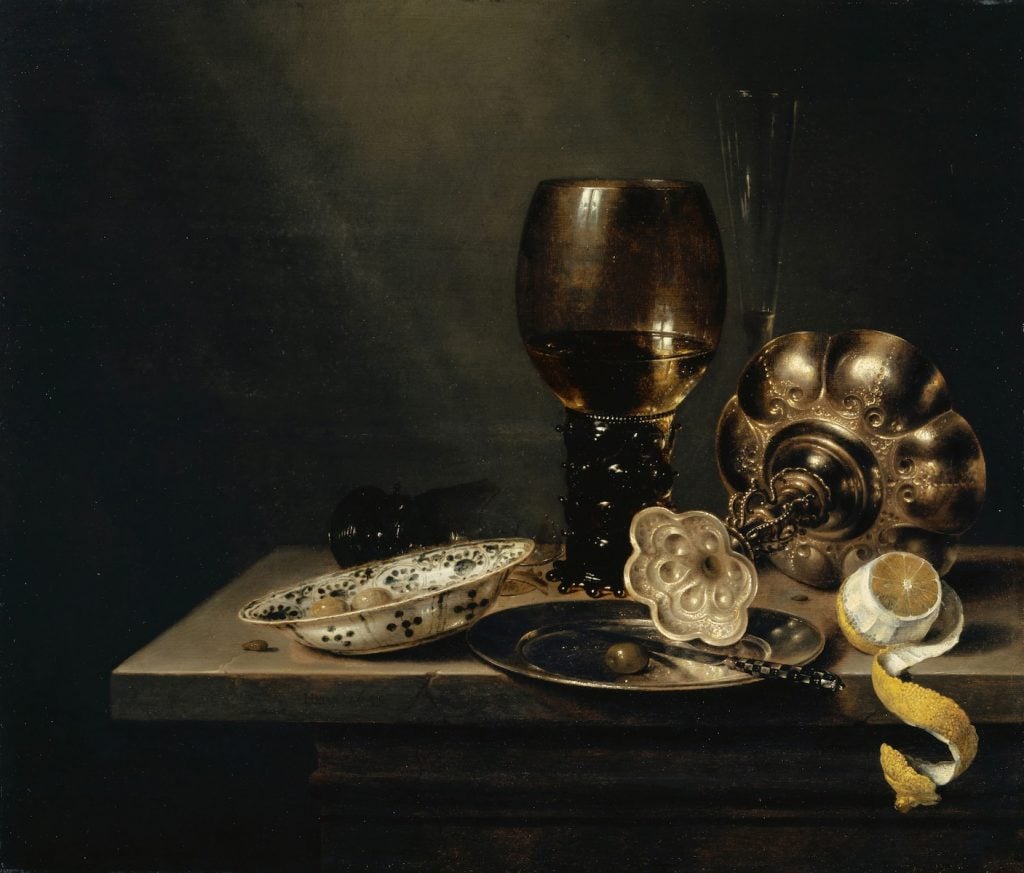
Willem Claesz, Still Life with Wan Li Plate (1649). Photo: Getty Images.
Rather than laugh-out-loud funny, “vanitas” paintings draw more on dark comedy. Scenes like Willem Claesz’s Still Life with Wan Li Plate feature symbols of wealth like an expensive Chinese plate and silver goblet, but these objects are filled with refuse and seem haphazardly discarded. The canvas, now housed in the Wallraf-Richartz Museum in Cologne, Germany, is designed to remind viewers that, despite how much they may own, we all eventually die and you can’t take it with you.
Pieter Bruegel the Elder, Netherlandish Proverbs (1607)
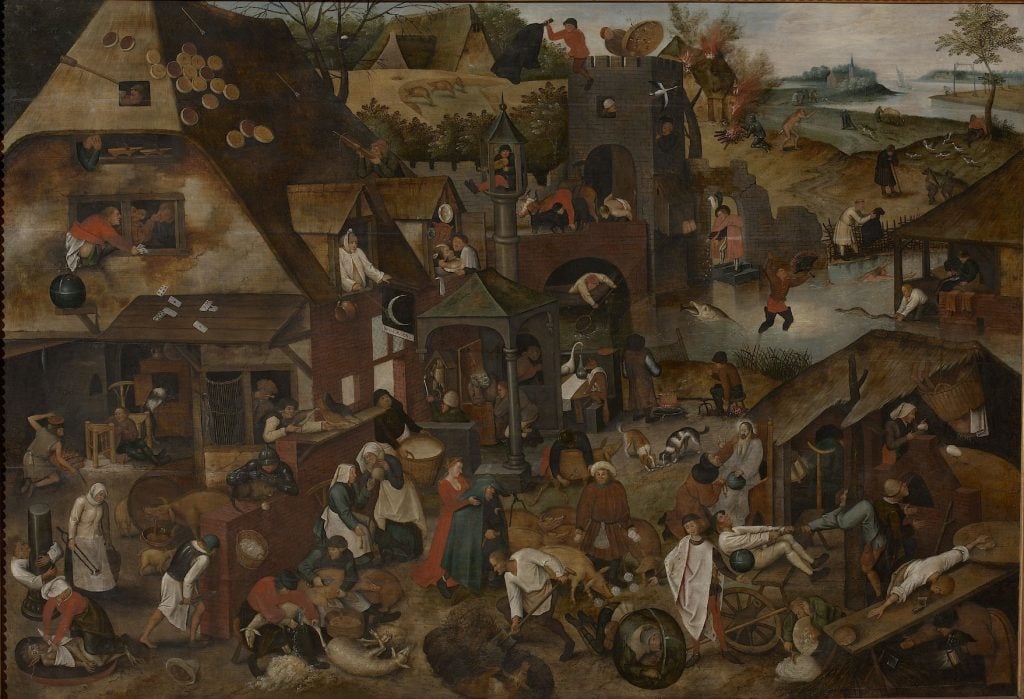
Pieter Bruegel the Elder, Netherlandish Proverbs (1607). Photo: Getty Images.
In this busy village scene, Bruegel has brilliantly gathered together personifications of more than 126 Netherlandish proverbs, in a kind of Golden Age Dutch rebus game. These include: a man “biting a pillar” (meaning to represent a religious hypocrite), a roof “tiled with tarts” (meaning to be demonstrate extraordinary wealth), and a man leaning out of a window “to crap on the world” (meaning to despise everything). The painting was so popular in its time that Bruegel’s son, Pieter the Younger, made at least 16 copies of the work.
Hieronymus Bosch, The Garden of Earthly Delights (1480–1505)

Hieronymus Bosch, The Garden of Earthly Delights (1480–1505). Photo: VCG Wilson / Corbis via Getty Images.
We’ve gone a little further back in the past for this final example of Dutch comedy to Hieronymus Bosch, perhaps the world’s first Surrealist. His Garden of Earthly Delights is like a Where’s Waldo of absurd characters, including a blue bird-man captured mid-way through eating a naked man, someone with the body of a cracking egg, and a lascivious pig dressed as a nun.
More Trending Stories:
Top French Art Expert Heads to Trial for Allegedly Selling Fake Antique Furniture to the Palace of Versailles
Two Contemporary Female Painters Triumphed at Sotheby’s. Who Came Out on Top Depends on How You Do the Math
How an Exclusive NYC Cult Influenced the 1970’s Art Scene
A Rare Soulages Lithograph Possibly Worth $30,000 Sells For $130 in Facebook Marketplace Mishap
Masterpiece or Hot Mess? Here Are 7 Bad Paintings by Famous Artists
Is There a Hat Better Than Napoleon’s? We Rank Art History’s 5 Most Iconic Chapeaux








